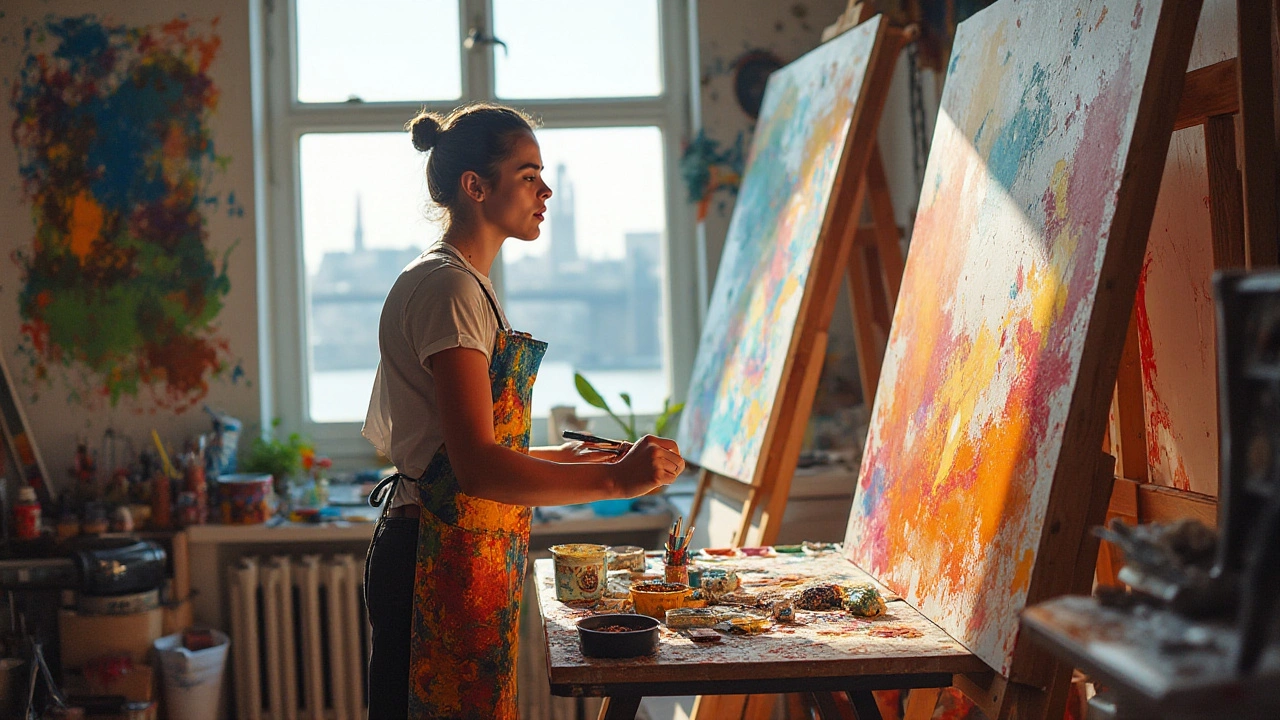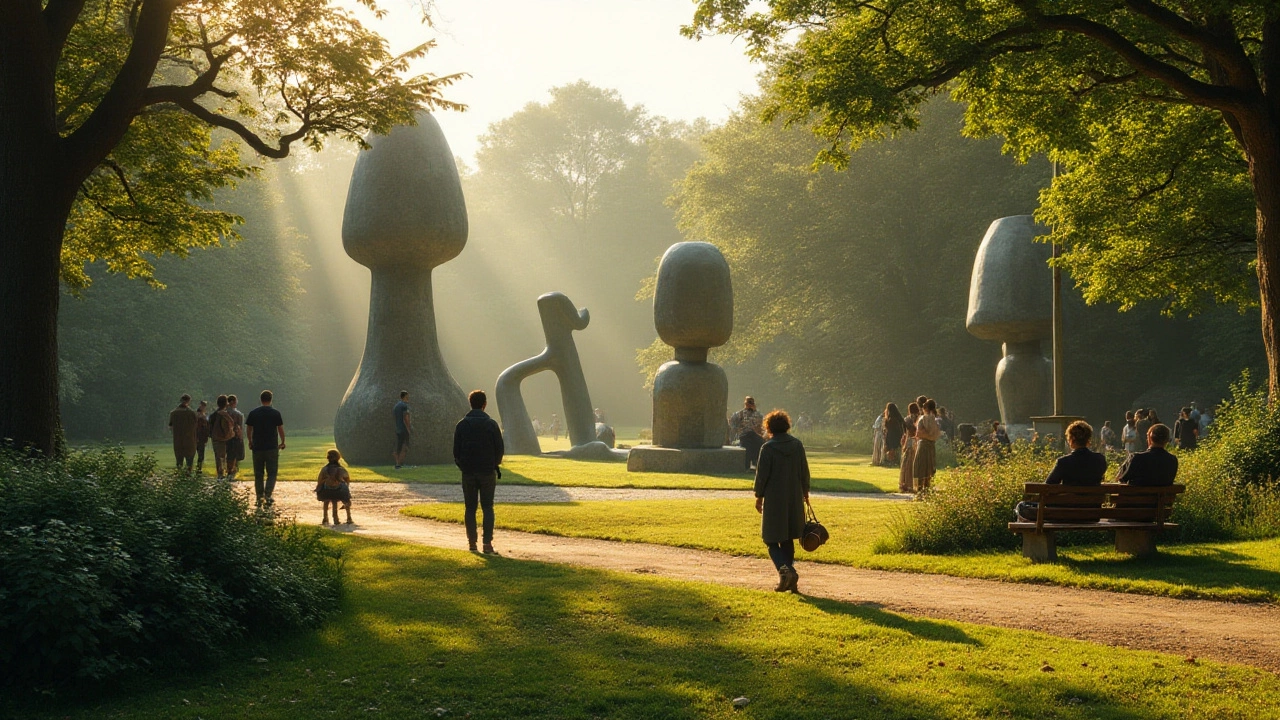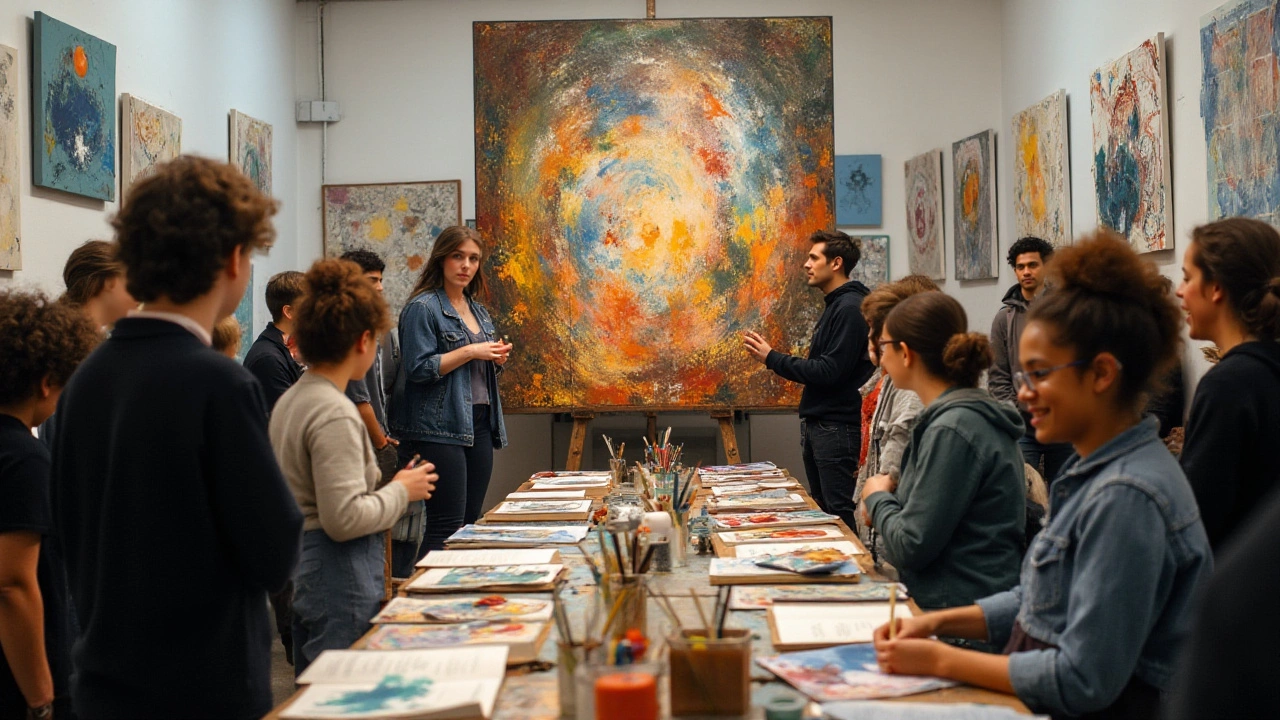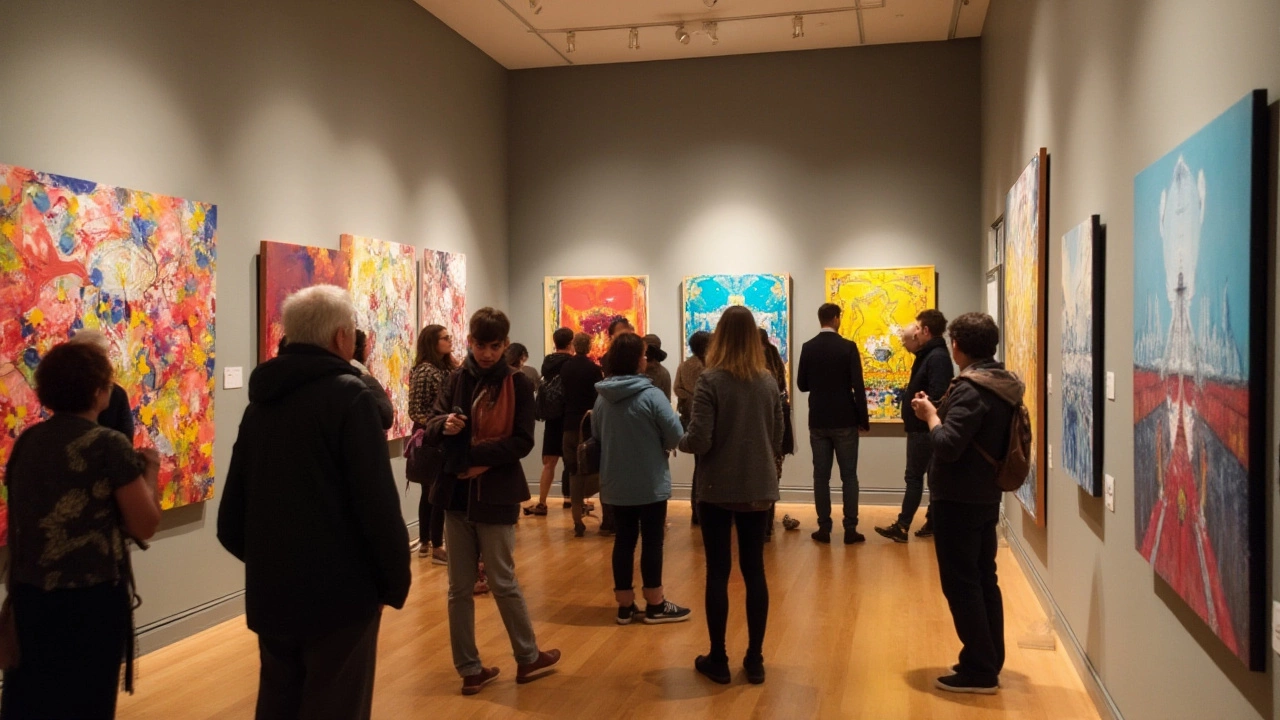Abstract art, in its captivating and enigmatic forms, has always sparked curiosity and debate about its underlying principles. Is it governed by any concrete rules, or is it a realm of absolute freedom where anything goes?
To many, abstract art is a dance between chaos and order, a visual symphony that challenges the boundaries of traditional artistry. By casually dismissing the realism of the visible world, abstract artists invite viewers into a space where emotions, concepts, and forms come to life in unexpected ways.
As we explore this imaginative domain, we ponder whether abstract artists rely on specific principles to create their masterpieces, or whether they rely solely on instinct and spontaneity. Let's embark on this journey to understand the delicate balance that exists between creative freedom and intentional design in the world of abstract art.
- What is Abstract Art?
- Historical Perspectives on Abstract Art
- Guiding Principles of Abstract Art
- Interpreting and Appreciating Abstract Art
What is Abstract Art?
Abstract art is a fascinating and often misunderstood genre within the realm of visual arts, where the emphasis is placed on colors, shapes, and forms rather than precise representations of the physical world. One might wonder how such art, seemingly devoid of concrete structure, manages to stir emotions and provoke thought. At first glance, abstract art can appear as a jumble of colors and shapes, yet it contains intricate layers of meaning for those willing to explore its depths.
While traditional art often aims to reflect or mimic the external world, abstract art deviates from this path by focusing on the essence of subject matter or its emotive effect. Its roots trace back to the early 20th century when visionary artists began to challenge the status quo of realistic depiction, seeking new ways to express the intangible. Kandinsky, one of the pioneers of this movement, famously stated,
"There is no must in art because art is free."His work showcased how combining colors and shapes alone could evoke the same emotional resonance as any realistic portrayal.
This exploration went hand in hand with societal shifts, as the world was undergoing rapid changes. Industrialization, technology, and evolving social dynamics inspired artists to look beyond the familiar. Abstract art was not simply a product of rebellion but rather a reflection of a world in flux, where capturing absolute reality often felt impossible. Artists like Picasso with his cubist endeavors, and Rothko with his evocative color fields, found new visual languages to communicate complex human experiences.
The beauty of abstract art lies in its invitation to the viewer to take part in the creative process. Each individual can interpret a piece based on personal feelings and perceptions, turning art appreciation into an interactive dialogue. This engagement is uniquely possible through abstract art's reliance on universal language—colors and shapes—that transcends cultural and linguistic barriers. It is interesting to note, within abstract art, certain patterns recur, perhaps hinting at universal themes that resonate globally among human experiences.
In today's world, abstract art continues to evolve, incorporating new materials and techniques. Some modern artists integrate digital mediums, merging traditional forms with contemporary technology, which adds layers to abstract expression. These innovations ensure the genre remains vibrant and relevant, constantly pushing boundaries and expectations. Abstract art challenges both the artist and the observer to embrace ambiguity and find meaning within it—a beautiful paradox of accepting the unknown to derive clarity.
The study of abstract art demonstrates how art does not necessitate the depiction of reality to reveal truth. Rather, it suggests that sometimes, stepping away from the literal can illuminate more profound insights. For those embarking on their own artistic journey or seeking to deepen their appreciation, abstract art offers a compelling reminder: There are infinite ways to view the world, each bringing its own unique understanding.

Historical Perspectives on Abstract Art
The stirring emergence of abstract art in the early 20th century marked a significant divergence from traditional modes of artistic expression. This revolutionary paradigm shift took place against a backdrop of social, technological, and intellectual transformations that influenced artists to explore beyond the confines of realism. Abstraction became a canvas for the intangible and unseen, fueled by a desire to express emotions and ideas without the necessity of depicting the material world directly. Pioneers like Wassily Kandinsky, often dubbed the father of abstract art, infused their works with a sense of spirituality and inner necessity, challenging the established art norms of their time.
"The more frightening the world becomes, the more art becomes abstract." —Paul Klee.
Kandinsky's experiments were echoed by movements such as Cubism, spearheaded by Pablo Picasso and Georges Braque. Although not entirely abstract, Cubism deconstructed visual reality and paved the way for non-representational approaches that would dominate European art scenes. In a similar vein, the De Stijl movement in the Netherlands, led by Piet Mondrian, advocated for a reduced form of abstraction, emphasizing basic geometries and primary colors. Such explorations transcended borders and conventions, encouraging a departure from replicative artistry to something more expressive and elemental.
In America, artists like Jackson Pollock pushed the boundaries further with techniques like drip painting, epitomizing the spontaneous energy that abstract art could embody. This era, often referred to as Abstract Expressionism, found a strong presence in post-war America, signifying a shift in the art world to the United States. The expression of raw emotion through dynamic brushwork and innovative techniques became synonymous with New York's vibrant art scene, heralding a new age in art history.
Exploration of abstraction was not homogeneous; movements like Russian Constructivism and the Bauhaus school, while rooted in abstraction, took a more architectural and practical approach, focusing on functionality within design. This diversity in abstract art's historical development underscores the flexibility and broad range of the genre, allowing it to continually evolve alongside global cultural and aesthetic shifts.
As we trace the threads of history, it becomes clear that abstract art didn't merely exist in isolation but was intricately woven into the social and intellectual fabric of its time. It questioned conventions and opened up new avenues for artistic inquiry—ones that continue to inspire and challenge the imagination. This historical journey highlights that, while abstract art may seem without rules, understanding its past reveals a tapestry of influences and innovations that define its complex and rich legacy.

Guiding Principles of Abstract Art
When delving into the world of abstract art, one might be intrigued by the apparent paradox between boundless creativity and the subtle presence of structure. Although this art form seems to break away from conventional rules, certain guiding principles often inform the creative process. These principles don't confine; rather, they provide a foundation upon which artists build their unique expressions. This distinction allows artists to break away from the literal and venture into realms purely defined by thought and emotion.
One foundational principle embraced by many abstract artists is the notion of balance. Unlike traditional art where balance may refer to symmetry or proportion, in abstract art, balance can be achieved through a variety of elements such as color, shapes, and even emptiness. What an artist chooses to feature prominently in an artwork often speaks volumes about their perspective and intention. Striking a balance between elements helps maintain the artwork's integrity and ensures that viewers are engaged without feeling overwhelmed. This leads us to another critical component: color theory. Every stroke of color holds the power to evoke specific emotions. Abstract artists often rely on their deep understanding of color interactions, crafting pieces that resonate on an emotional or psychological level.
Expressionism in abstract art also underscores the importance of spontaneity and instinct. While planning and technique certainly play roles, artists often trust their instincts, allowing their hands to flow freely across the canvas, letting the ideas come to life unimpeded. It's a delicate dance of blending foresight with intuition. This principle of spontaneity enhances the personal touch each artist brings to their work, making it uniquely theirs. Moreover, it reflects the reality of emotions—unpredictable, raw, and boundless.
"The artist must train not only his eye but also his soul." — Wassily Kandinsky, a pioneer of abstract art whose works emphasized spiritual elements and the inner essence of abstract exploration.
In crafting abstract art, movement and rhythm function as a dance on the canvas. The concept of movement does not pertain to literal motion, but rather to the directional flow within a piece. Observers might find their eyes guiding them along certain paths constructed by the artist's choice of swirls or linear shapes that form an invisible narrative. Rhythm enhances this journey, dictating the pace at which different elements are experienced, be it through repeated patterns, contrasts, or subtle transitions. This evocation of rhythm can provide viewers with a sense of cohesion, making their visual experience more immersive.
Of course, what truly sets abstract art apart is its inherent freedom. Despite these guiding principles, artists assert their individuality by deciding which conventions to embrace and which to discard. Some incorporate representational elements to create an anchor, while others dive deep into abstraction, leaving pieces open to interpretation. This freedom in abstraction invites endless possibilities, forging a unique dialogue between the artist and the observer. As one ponders an abstract piece, it transforms with each glance, allowing personal experiences and emotions to influence perception, making abstract art a continually evolving conversation.

Interpreting and Appreciating Abstract Art
The realms of abstract art often seem mysterious and elusive to many. As an observer standing before a swirl of colors, shapes, and seemingly random patterns, one might wonder how to derive meaning from it. Yet, abstract art offers a unique experience, encouraging viewers to engage with a piece on an emotional and personal level rather than searching for a literal interpretation. When approaching abstract art, it's vital to let go of the preconceived notion that art must represent something tangible. This liberating mindset allows one to explore the depths of personal perception and individual emotional response. To achieve this, a person should consider their feelings and instinctual reactions as valid points of exploration.
Reflecting Personal Emotion and Experience
When interpreting abstract art, reflecting on personal experiences and emotions is key. Each stroke and color chosen by the artist can evoke a different feeling or memory in each observer. Allow yourself to reminisce about a moment in your life that resonates with what you see. This art form often aims to provoke such personal associations, breaking away from collective understanding and leading each individual on a journey that is profoundly personal. This degree of engagement not only deepens artistic appreciation but also enriches understanding."Art is not what you see, but what you make others see." – Edgar Degas

